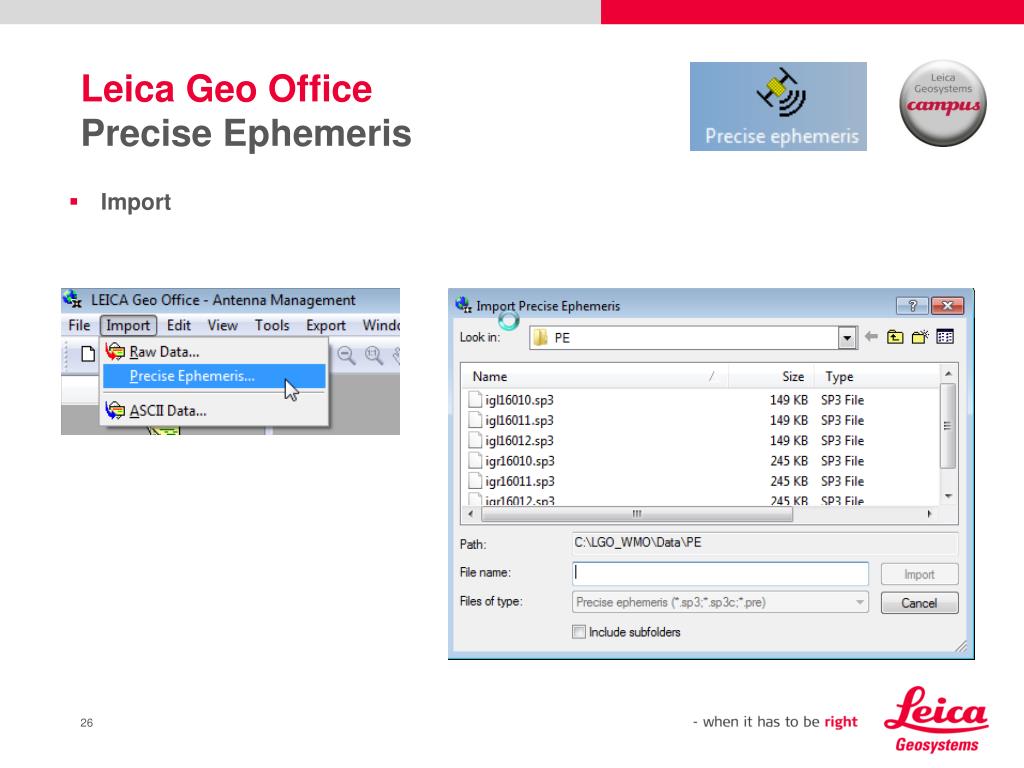
In this two-stage mode, users can extensively QC their processed GNSS-trajectory prior to LC processing. Loosely Coupled (LC): The GNSS trajectory is first processed and the resulting time-stamped position and velocity updates are passed to the loosely coupled processor.Inertial Explorer supports the following two processing modes: Inertial Explorer runs within our familiar Waypoint GrafNav processing environment and data analysis is performed with the same plotting tools.
 Precise Point Positioning (PPP) processing. Built-in processing profiles for airborne, ground, pedestrian, UAV and marine projects. Single step GNSS and Inertial Measurement Unit (IMU) processing for efficient workflow. Streamlined Project Wizard for quick startup. Easy integration with our SPAN® GNSS/INS products. Velocity constraints for best pedestrian and ground vehicle results in challenging GNSS signal conditions. Boresight computation between the IMU and vehicle frame for users that require attitude output relative to the vehicle frame. Direct output to Google Earth, RIEGL POF/POQ, DXF, and SBET format. Loosely and tightly coupled GNSS/INS processing. Boresight module for solving angular offsets between IMU and camera frames. Attitude corrections are automatically applied for the effect of the deflections of the vertical using a geopotential model of the Earth based on EGM2008. Configurable support of L1+L2 (includes E5b, B2I) or L1+L5 (includes E5a, B3I) for different applications.
Precise Point Positioning (PPP) processing. Built-in processing profiles for airborne, ground, pedestrian, UAV and marine projects. Single step GNSS and Inertial Measurement Unit (IMU) processing for efficient workflow. Streamlined Project Wizard for quick startup. Easy integration with our SPAN® GNSS/INS products. Velocity constraints for best pedestrian and ground vehicle results in challenging GNSS signal conditions. Boresight computation between the IMU and vehicle frame for users that require attitude output relative to the vehicle frame. Direct output to Google Earth, RIEGL POF/POQ, DXF, and SBET format. Loosely and tightly coupled GNSS/INS processing. Boresight module for solving angular offsets between IMU and camera frames. Attitude corrections are automatically applied for the effect of the deflections of the vertical using a geopotential model of the Earth based on EGM2008. Configurable support of L1+L2 (includes E5b, B2I) or L1+L5 (includes E5a, B3I) for different applications. #Process static gps data with leica geo office full
Full dual frequency GPS, GLONASS, BeiDou, Galileo and QZSS support. Automated processing environment detection (aerial, ground vehicle, pedestrian and marine) allows appropriate GNSS + INS processing settings to be used automatically to simplify workflow and reduce the learning curve needed to start producing quality results. For more experienced users, a wealth of processing configuration options are available. 
A project wizard is available to allow new GNSS/INS users to become productive quickly. IE has workflows to match your business and your expertise. IMU data from high end Fibre Optic Gyro (FOG) or Ring Laser Gyro (RLG) IMUs, and from lower grade sensor technology such as Micro Electrical Mechanical Systems (MEMS) can be processed. IE can produce results suitable for demanding applications such as mobile mapping, aerial and hydrographic surveying. The tightly coupled integration of GNSS and IMU data delivers precise results, even when lower grade inertial sensors are used. Inertial Explorer® (IE) maximizes the performance of your GNSS/INS hardware by ensuring you get the position, velocity and attitude accuracy your application requires.






 0 kommentar(er)
0 kommentar(er)
